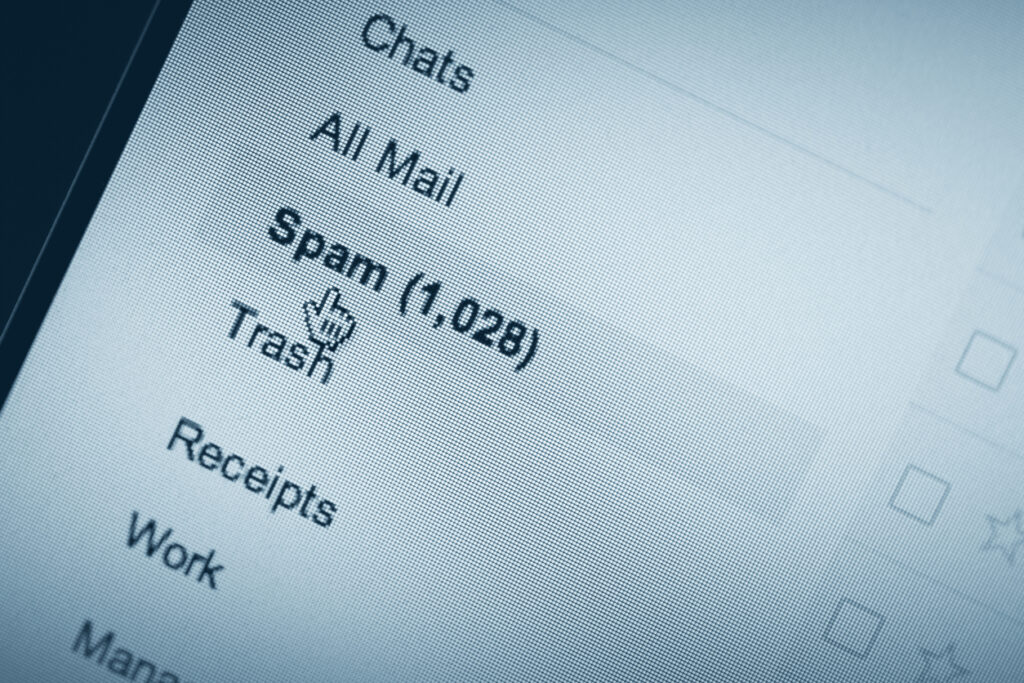What Potential Tech Biases Mean for Political Email Senders


Large technology companies like Alphabet, Microsoft, and Yahoo have created highly sophisticated Spam Filtering Algorithms (SFAs) to scan incoming email and provide their mailbox customers with email they want, removing the email they don’t.
It’s not an easy job. As the founder of an ESP that services both political and non-political clients, email administrators at these companies have told us personally that proper handling of incoming email is probably the single largest technical challenge for companies offering free email mailboxes.
Compound this with the fact that internet users worldwide send an estimated roughly 300 billion emails every day to each other and you can see that this is no small task.
In speaking with clients over many years through various political campaign seasons, we’ve often heard a common lament: “Gmail, Hotmail, Yahoo, etc. just don’t like my type of political email. They’re treating my email unfairly!”
Are they right? Is there truth to this? Are some places friendlier than others to certain kinds of political email?
According to a March 2022 10-page study published by four students in the Computer Science Department at North Carolina State University, the simple answer is: “Yes.”
Viewing the summary data in chart format, it’s apparent that Gmail has the most inequitable treatment, and thus the highest bias. Outlook has the most aggressive treatment and moves almost all political (both left and right) email to spam. Yahoo overall marks on average 32 percent of political email as spam, and is the least restrictive of the three mailbox providers.
Before we review the student’s findings in detail, we first want to discuss their methodology. Overall, we feel they did a very good job attempting to be neutral and free from prejudice in their process. They designed their study carefully, knowing that it’s almost impossible not to have some flaws in the processes of collecting and interpreting their data. This was a fairly large study, and the students implemented many best practices to help provide for statistically-accurate data collection.
Here’s a brief overview of their methodology: The researchers created 34 accounts through each of the three major free email providers (Gmail, Outlook, and Yahoo). Each account had different characteristics in order to “accurately estimate the political biases and mitigate the potential effects of demographic factors such as ethnicity and age.”
The researchers write: “[W]e assigned a different name to each email account that we randomly picked from a database of common names associated with White, African-American, Hispanic, Asian, and South Asian ethnicities. For age, we assigned each email account to one of the three age groups of 18-40, 40-65, and 65+. Finally, we randomly assigned male and female genders to the email accounts.”
The study covered the 2020 cycle from July 1-Nov. 30, 2020 and looked at email sent by two presidential, 78 Senate, and 156 House candidates email lists.
The team completed 24,072 automated email newsletter subscription requests. Over the five-month study, they collected 318,108 emails over the three mailbox providers.
The students performed a Baseline Experimentas part one of their study where there was no user action. The second part of the study was an Interaction Experiment, which tested to see if by interacting with the email a user could “train” the SFA on their preferences. Mailbox providers have claimed that users can train the service to learn which kinds of email the users prefer to receive, and which kinds of email the users do not.
Conclusions of the North Carolina State University Team: All SFAs exhibited political biases in the months leading up to the 2020 elections. In fact, the study found that political affiliation of the sender plays a role in getting an email marked as spam.
In terms of favoritism, Gmail leaned towards the left whereas Outlook and Yahoo leaned towards the right. The percentage of emails marked by Gmail as spam from right-wing candidates grew steadily as the election date approached.
Although user interactions — such as moving an email from the spam folder to the inbox, or marking a message as spam — did see some adaptation and learning by the services (Gmail was the best “learner”), this adaptation doesn’t necessarily eliminate the political bias.
Demographic factors, including age, ethnicity, and gender, (of the email user) didn’t influence the political bias of SFAs.
Arguably, there’s also a possibility that the SFAs of the email services learnt from the choices of other subscribers on the network, marking certain campaign emails as spam and then marking similar campaign emails as spam for other subscribers.
While we have no reason to believe there were deliberate attempts from these email services to create these biases to influence voters, the fact remains there that their SFAs have learnt to mark more emails from one political affiliation as spam compared to the other.
These biases may have an impact on the outcomes of an election that we can’t ignore, especially with the ability to influence undecided voters.
What Political Senders Can Do
Although an email sender may interpret these biases and challenges as an excuse for thinking that things are simply stacked against them, it’s just not true. In fact, senders of all kinds can and do meet with success and deliver well to the large mailbox providers.
The way to success involves a defined plan and checklist of best practices. Some of these are technical, others are more process-oriented. Additionally, take a strategic approach to your messaging content by being careful with your mix of content and calls to action.
Some common mistakes we’ve seen include working with dirty email lists, old lists, compiled lists, voter registration lists, lists from friends, partner lists, and other poor quality lists. Infrequent and occasional sending is also problematic. Consistent email sending (daily, weekly, etc.) and steady email volumes is important for best results.
Generally speaking what matters most with any mailing list is the level of permission granted to you by the subscriber. In other words, did they ask to receive your email? Will they be surprised if they receive your email?
We’ve seen political senders assume that as long as the mailing list is on the same side of being liberal or conservative, it’s okay to send to them. Unfortunately, that’s just not the case. Again, it all comes down to the level of permission.
Much can be accomplished by optimizing those subscribers who are actively engaging with your email by opening it, clicking on it, and forwarding it. Because these mailbox providers host your email on their servers, they can and do track the way every reader interacts with your email. It tells them a lot.
One important metric used by all mailbox providers is the level of engagement. Put simply, highly engaged email gets preferential treatment, as it is deemed to be far more interesting to readers by the filters. That’s why savvy senders deploy tactics that encourage engagement (clicks, forwards, shares, and “read more” links).
Most free email mailbox providers scan and measure hundreds of data points of incoming emails to determine where to place email messages (inbox, promotions, bulk sender, spam folder). A few easy things every email marketer can check are as follows: make sure your mailfrom address is from your domain name (and not a Gmail, Hotmail, Yahoo, address). Make sure the domain name you are using in your email message has been around for a least one year, hopefully several years.
Make sure your syntax, HTML code, spelling, and links are perfect and not malformed. Make sure your email is sent in responsive format (can be read easily on all devices), and send it in multipart format (html and text format).
This is just the start. There are many, many, more checks and processes that can be done. Five main areas to work on include your subscriber list(s) quality, audience segmentation, your messaging content, your engagement/CTAs, and your sending reputation. Start with the low hanging fruit first, and work up to more strategic and technical solutions next. The improvements we’ve seen after changes are made can be dramatic.
Andrew Lutts is Founder & CEO of Net Atlantic, Inc. Since 1995, Net Atlantic, Inc. has been assisting companies, organizations, political parties, special interest groups, and candidates create, send, deliver, and track email campaigns.

